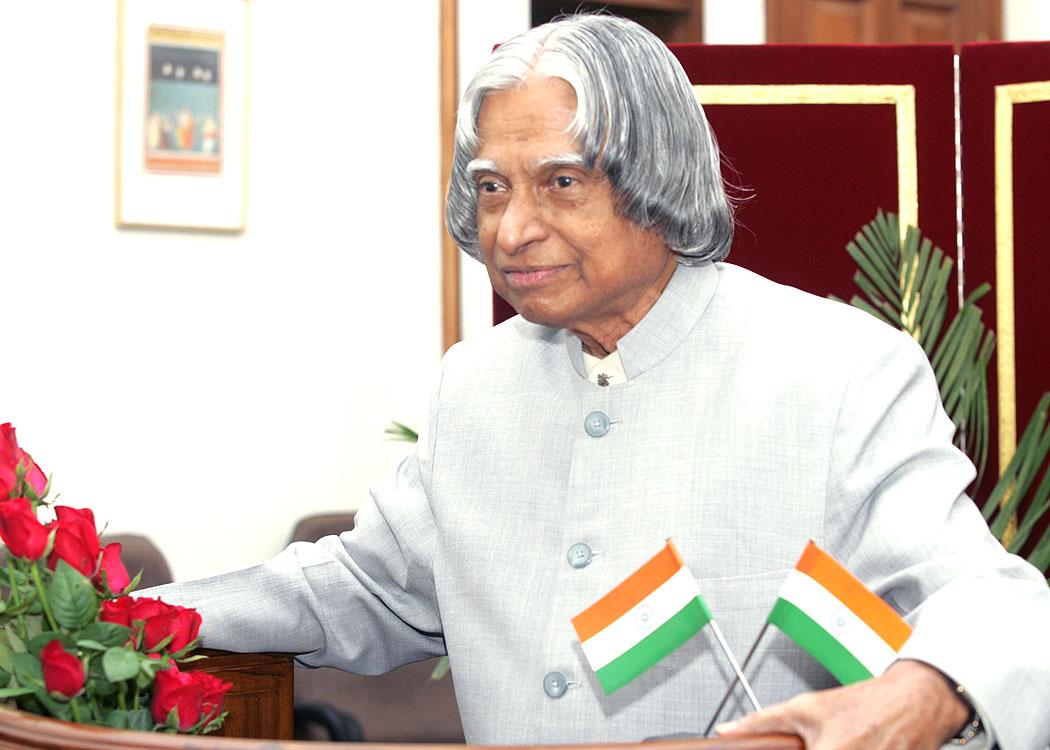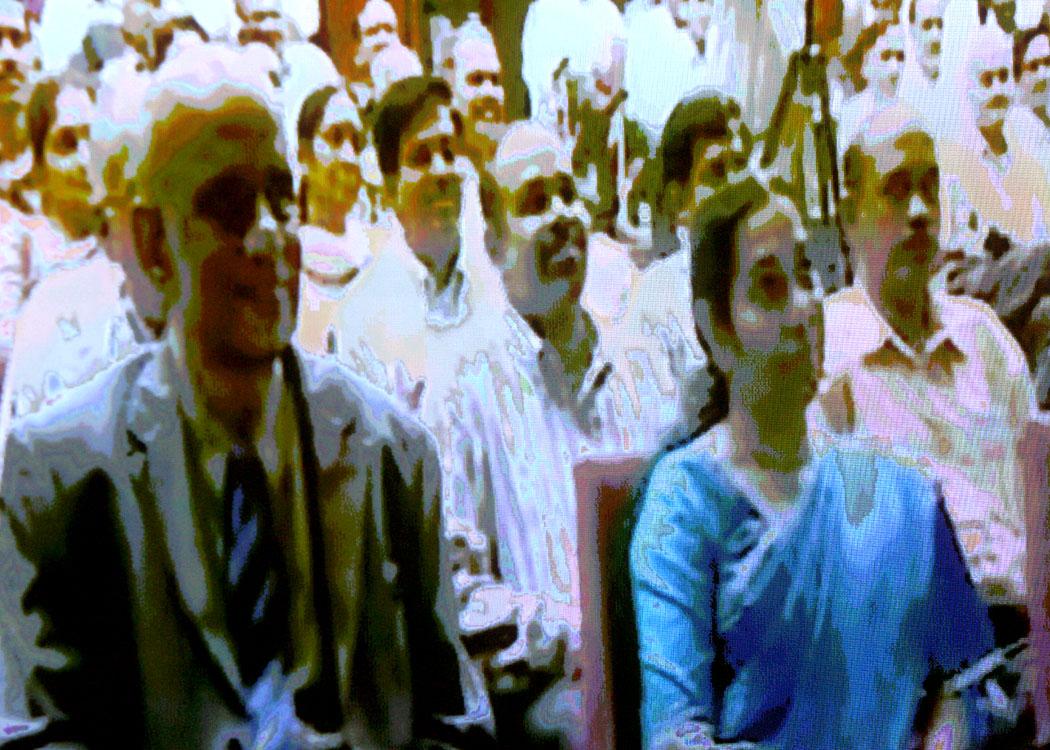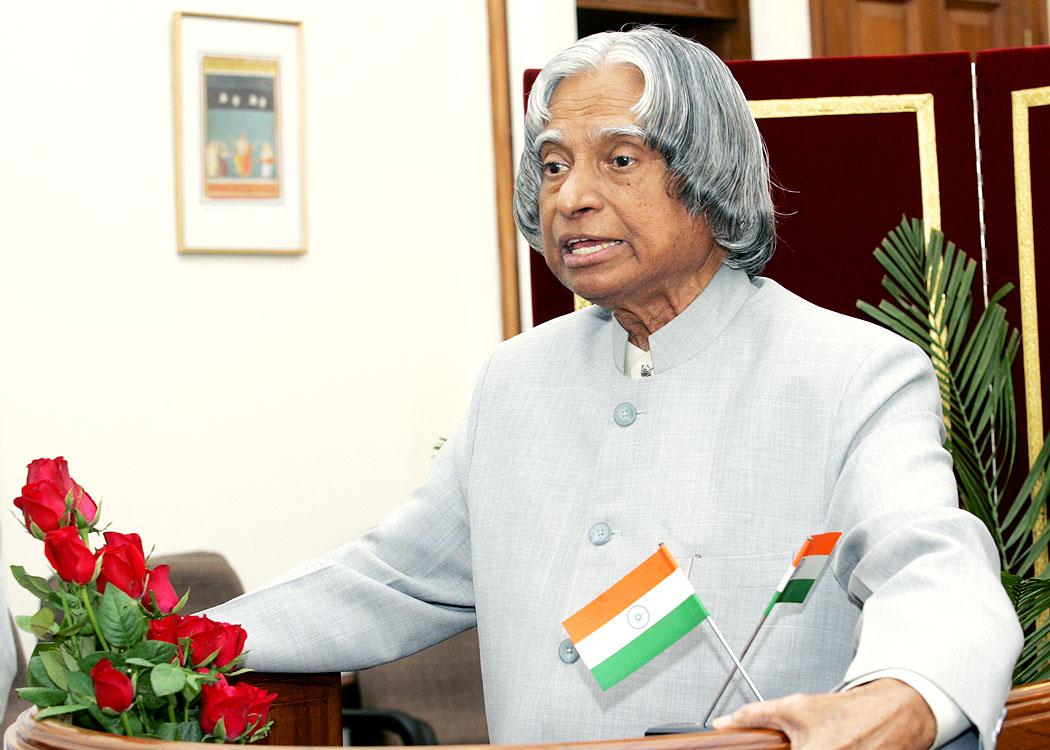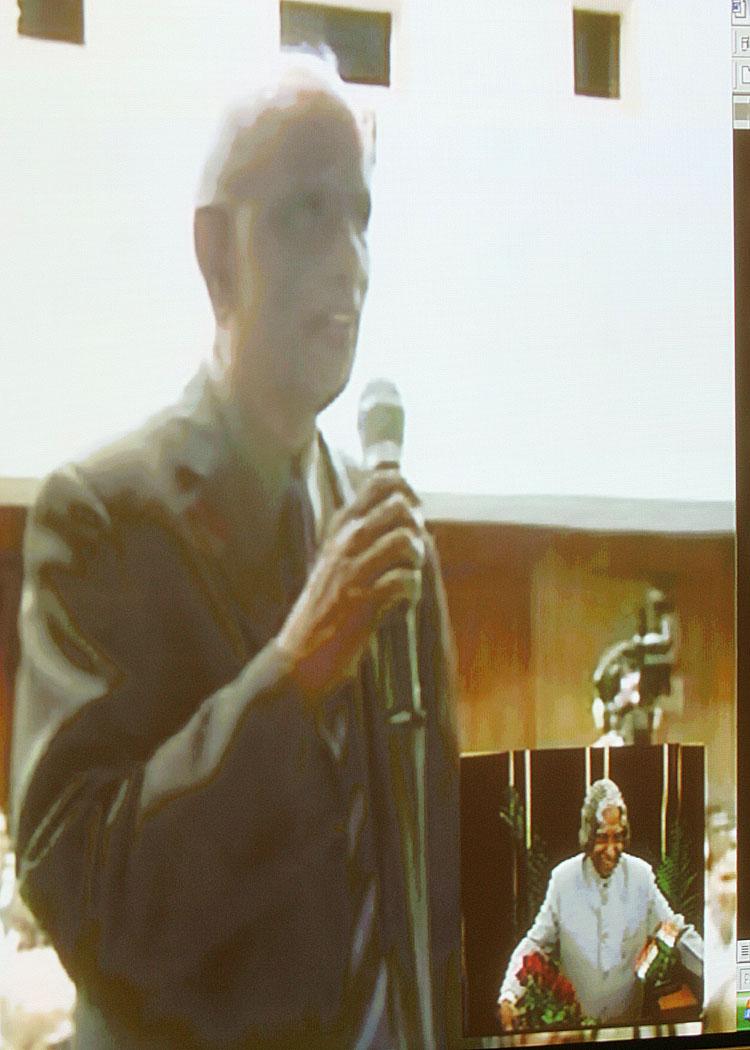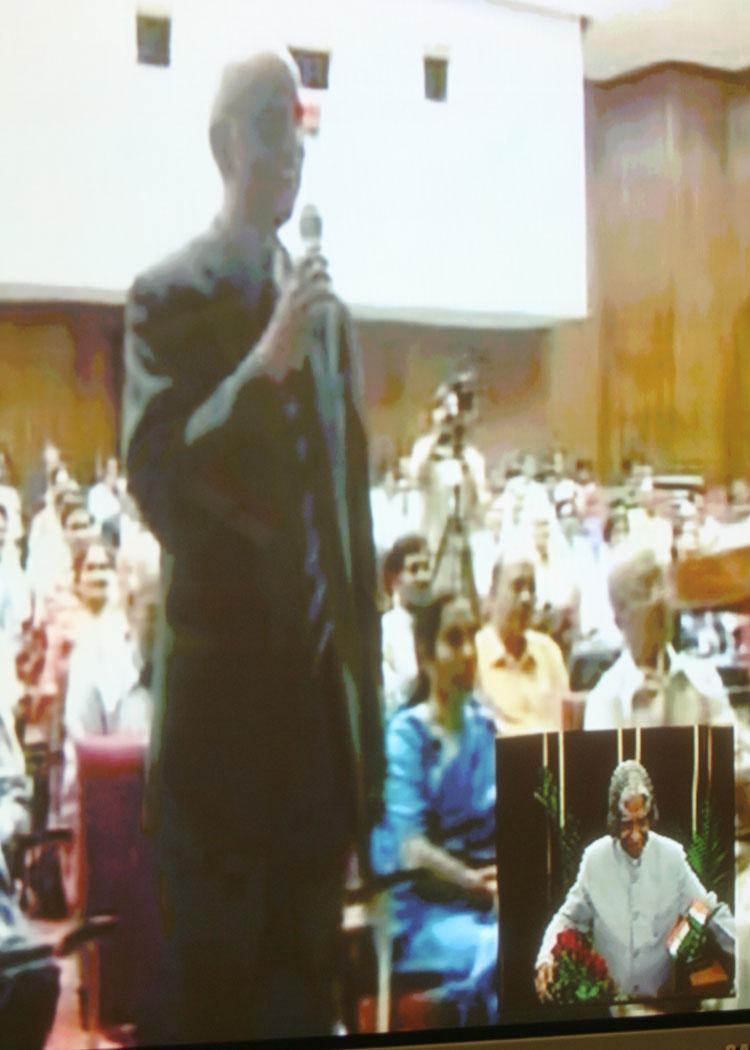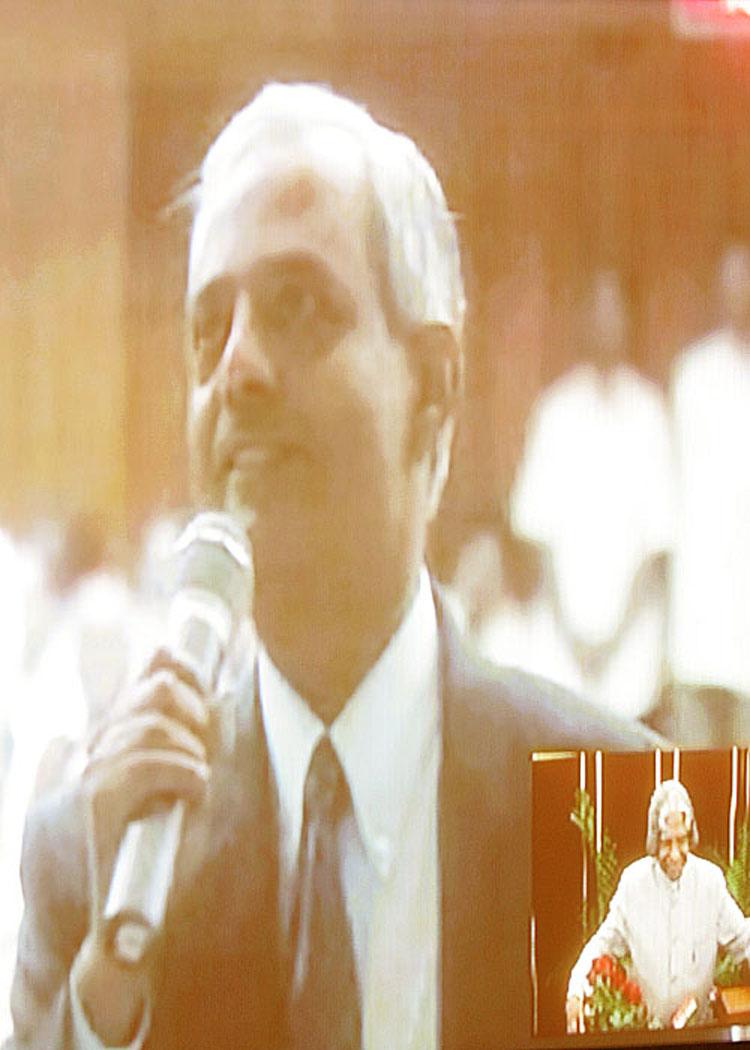Address At The Conference On An Indian Century: Science, Technology And Policy At Defence Metallurgical Research Laboratory(Dmrl), Hyderabad
Through Video Conference From New Delhi : 29-10-2005
Some experiences
I am delighted to participate in the valedictory function of the Conference titled "An Indian Century: Science, Technology and Policy" to mark the Seventieth birthday of Dr.VS Arunachalam. I am happy to know that the Conference addresses the broad theme of the relationship between National Policy and various facets of science and technology. I extend my greetings to the organizers, scientists, technologists and distinguished invitees. This Conference is definitely a fitting tribute to Dr. V.S. Arunachalam on his 70th birthday who has been actively engaged in the formulation of science and technology policy for the nation apart from his unique contribution in the material science, research and teaching. I would like to share "some experiences" I had with Dr. Arunachalam.
Meeting a material challenge
Here I would like to remember an event which took place thirty years ago. During 1976, when I was busy with the SLV3 project in VSSC, for realizing the Inertial Measuring Unit (IMU), we needed a precision IMU housing unit which can house 3 accelerometers and 3 rate integrating Gyros and the connected processing electronics. The weight budget given for the entire inertial measuring unit was only 3 kgs. Such a precision housing with in this weight budget can be made only by using magnesium alloy. I was in search of a foundry which can do this casting since it was a crucial item for the SLV-3 flight. I visited number of industries both in the private and public sector. When I asked them, whether they can cast the precision IMU housing, all of them told that it will take minimum three months for realizing the casting since they have to make a metallic mould. In a periodic review of the SLV3 programme by Prof. Satish Dhawan, IMU housing was on the critical path. Then he suggested that there is a tall scientist working in DMRL, who is a metallurgist. I am sure if you go and tell your problem, he will be able to help you. When I reached DMRL, I found a tall scientist who was busy discussing with his team in one of the laboratories. He was none other than Dr. Arunachalam. He asked me what my problem was. I told him that I needed a magnesium alloy precision casing for the inertial measuring unit within a weight budget of 3 kg. I also told him, I would like to have one Unit of the cast casing for testing within a week. He immediately told that there is no problem. He said, you be with me, I will get you within a week. He called his team members and explained the task. Members were studying various options. Dr. Arunachalam gave a suggestion that they can cast using a thermo-cole mold with certain lining, which is the fastest method to get the casting in time. With this method, I got my casting within a week. When others were thinking of making regular casting through a metallic die, which is a time consuming process, Dr. Arunachalam gave me an innovative solution instantaneously to meet the timeframe. The only problem here was, you have to make a mold for every casting. This was my first meeting with Dr. Arunachalam. At that time, I was not aware that I am going to work with him in the DRDO in the later years, nearly for 10 years.
Later, during 1982 Dr. Arunachalam and Dr. Raja Ramanna were responsible for my re-entry into DRDO from ISRO. Dr. Arunachalam talked to the then Defence Minister, Shri R. Venkatraman who requested Prof. Satish Dhawan to relieve me from ISRO for taking up the directorship of DRDL.
The period 1982-1992 was an important decade for the DRDO. During this period three major programmes were sanctioned due to the leadership of Dr. Arunachalam. One was the Integrated Guided Missile Development Programme (IGMDP), second was light combat aircraft and the third was ATV programme. This is the first time the DRDO budget was increased from 2% of the defence budget to four per cent of the defence budget. This was the time innovation in management was also brought in DRDO. A Board of Management structure was created for IGMDP, a society structure was created for LCA and a hybrid structure was created for ATV. DRDO graduated in this period from an import substitution establishment to a full-fledged system design and development organization. Scientists' strength of DRDO also grew to six thousand. Dr. V.S. Arunachalam was responsible for injecting these innovations in DRDO. When others were thinking of small projects Dr. Arunachalam thought of big programmes for the DRDO. When I think of this action, I am reminded of a Thirukkural by the Poet Saint Thiruvalluvar written 2200 years ago.

It means that whatever may be the depth of the river or lake or pond, whatever may be the condition of the water, the lily flower always comes out of the water and blossoms. Similarly, if there is a definite determination to achieve a goal even if it looks impossible to achieve, the man succeeds. I find this important characteristic as visualized by Thiruvalluvar is embedded in Dr. Arunachalam.
A friend
I recall another incident, which happened when we were preparing for the Agni launch in 1989. We were at Chandipur range. One day before the launch we had the launch authorization board meeting which went upto 2'O clock in the morning. After the meeting Dr. Arunachalam and myself were returning to the guesthouse from the blockhouse. On the way, I seemed to have slept in the Car. When we reached the guest house the car stopped. Dr. Arunachalam gently woke me up and I found my head was on his shoulder all along. I felt very embarrassed since I was keeping my head on his shoulder all along the journey and he didn't want to disturb me by moving my head. Friends, will any boss allow such a thing to happen. Of course Dr. Arunachalam was not a boss, he was always a friend.
Visionary zeal
Many programmes which he envisioned in the eighties have now fructified in to full fledged systems. The visionary action taken by Dr. Arunachalam has resulted in two of the strategic missile systems being led into production. The Armed Forces have deployed the systems.
Similarly, I can proudly say that our scientists have designed, developed, tested, evaluated, and integrated the LCA which has logged more than 400 trouble free flight sorties in three different aircrafts. This is a demonstration of the farsightedness of Dr. Arunachalam in visualizing and getting a complex programme sanctioned for the nation.
I have narrated these examples to illustrate how Dr. Arunachalam was able to create a vision, select the teams and fully empower the scientists to accomplish complex missions so that the country is able to achieve self-reliance in critical defence systems.
Friends, when I see all of you with Dr. Arunachalam and other distinguished scientists and technologies of the country, I would like to share with you two important areas of science and technology in which the country is progressing towards a radical policy, where all of you have an important role to play. One is National Aerospace Policy and the other one is Energy Independence.
National Aerospace Policy
With our national strength and opportunity for larger demand in aerospace systems and export potential, a large business for industries is in front of us. It is essential that this strength is integrated into a National Aeronautics Policy for integrating the strengths of both civil and military aviation sectors to bring synergy in the aviation sector. Implementation of this policy will usher in an era of high technology and high skill industry environment resulting in generation of assets, wealth and employment opportunities in the country. National Aeronautical Policy is being progressed now, I am sure that it will lead to the formation of Aeronautical Commission. Design, development and production of 200 seater Aircraft with multiple partnership will be an important mission of the commission.
Energy Independence
By the year 2030, India should achieve energy independence through solar power and other forms of renewable energy; maximize the utilization of hydro and nuclear power and enhance the bio-fuel production through large scale energy plantations like Jatropha. It means that India has to graduate itself from fossil materials such as oil, gas and coal that will decrease naturally in few decades.
Now India is in the mission of evolving a comprehensive renewable energy policy for energy independence within a year. This should address all issues relating to generation of energy through wind, solar, geothermal, bio-mass and ocean. The nation should also work towards establishment of thorium based reactors. Research and technology development of Thorium based reactors is one of the immediate requirements for realizing self-reliance in nuclear power generation and long term energy independence of the nation. Let us all work for self-sufficient environment friendly energy independence for the nation.
My Greetings to Dr. Arunachalam on his 70th birthday and I pray for his continuing contribution in science and technology for the national and international programmes.
May God bless you all.

